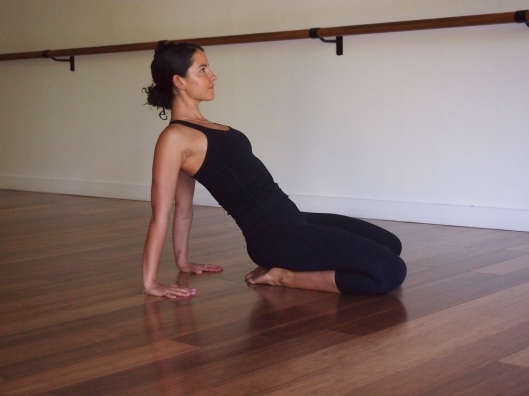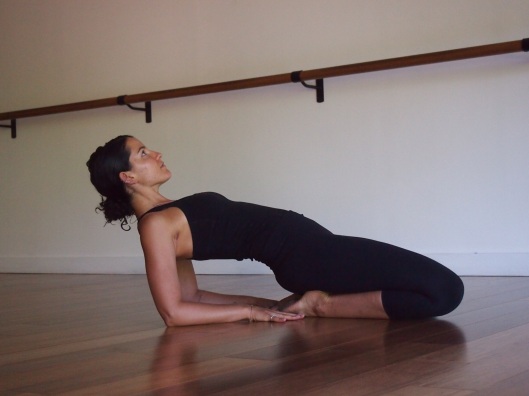Tags
energy, health, insight, kidney meridian, kidneys, meridians, organ health, saddle pose, Sarah Powers, wellness, yin, yin yoga, Yoga
Fresh from an 8 day training with Sarah Powers, creator of Insight Yoga and an incredible source of wisdom, I am wildly inspired to share with the world my passion for Yin yoga.
Yin yoga is a practice of physical postures that gradually pull on or pressurise areas of the body to stimulate chi flow through the energy channels of the body. The chi assists movement of blood and other fluids that nourish our internal organs and the denser tissues of the body. Through gradually adding load to a pose, as opposed to repetitive rhythmic movement, we relax the muscular engagement and move deeper into the fascia, joints, tendons, ligaments, to create flexibility and softness which is a wonderful compliment to more yang styles of exercise such as vinyasa yoga, running, strength work etc.
While the muscles are made up of 75% water and swell to around 90% with rhythmic movement, the fascia is around 6% and as such responds to a gentle stressing of the tissues over longer periods of time. The pulling or pressurising of areas of the body stimulates our body’s natural repair response sending nourishing fluid to the restricted region.
The practice has the equivalent energetic and emotional effects on our whole mind and body through breathing and mindfulness techniques that balance the busy pace of our modern lifestyle. It can be challenging to stay in the poses for extended periods of time meaning it includes an act of will to accept and embrace the stillness of the postures which creates mind strength for other aspects of our lives that require patience and persistence. I certainly found it challenging at first to resist the urge to fidget or move out of the poses but with regular practice have come to enjoy that quiet time immensely.
As you take each pose you explore your edge in the shape both physically and emotionally, that is to say you find a resistance within the body that is prevalent yet bearable, you meet the capacity of your natural range of movement. The intensity deepens over time, some discomfort is necessary to reap the benefits of the poses, as with all things in life it is the challenges that leads to growth and with the combination of moving gently and practising mindfulness we meet challenge in a very non aggressive way, maintaining an inner calm inclusive of the bodily sensations.
I would highly recommend yin yoga to anyone wanting to; increase their flexibility, their energy levels, nourish their vital organs, explore and strengthen their mind habits, include some periods of quiet in their week or day, learn to live in their own skin and bones.
Saddle pose is one such yin pose.
BENEFITS
This pose stimulates the kidney meridian by pulling on the sacral lumbar tissues. The kidneys are the store houses of our vital energy and should be valued as essential to the functioning and health of all other organs. They filter our blood, around 56 litres per hour! That’s a busy organ and as such we need them in the best possible condition to effectively carry oxygen around the body and keep our immune defences in great form.
This meridian also nurtures our adrenal glands and combined with full diaphragmatic breathing we access the parasympathetic nervous system to rest what we call the fight or flight response preserving the production of stress hormones, adrenalin and cortisol, for more urgent circumstances.
METHOD
To come into saddle pose start kneeling with your feet underneath your sit bones and your knees in full flexion slightly separated. If it is uncomfortable to sit on your feet you could add some soft padding under your ankles or behind your knees, if that is uncomfortable you could try sitting between your feet. Move slowly and gently toward your edge of resistance by taking the hands behind you on the floor and moving them one step at a time back until you find a level of discomfort that is not your maximum but still provides some sensation, remember that the intensity will increase over time and we will be here for 5 minutes. As you recline back in this shape you may be able to lower onto your forearms or even all the way onto your upper back which will increase the sensations in the spine making this a backbend. If you decide that you have gone beyond your appropriate edge, come back to an earlier variation at any point.
As you move into a yin yoga pose there are 3 things to keep in mind; finding your appropriate edge, that is to say the capacity of your natural range of movement, committing to stillness and softness in the pose and staying in it for a period of time to gradually add load.
When moving away from the pose place your hands beside you and on an inhalation engage your abdominal muscles coming up the same way you went in.
In this pose if you have any fragile tissues in the spine then a rolled up blanket or bolster placed horizontally under the lower back or vertically the length of the spine can support you, if it is still not available without pain stay upright or come forward to sphinx pose.
If this is uncomfortable on your knees and padding behind them does not help then come forward into sphinx pose.
MEDITATE
As you settle into this pose take your awareness toward your breath (pause) noticing it’s texture, is it smooth or sharp? It’s depth, is it short or long? It’s quality, is it free flowing or restricted? Are you pausing after the inhale or exhale? Try to observe these aspects without manipulating the breath. Like a witness looking in observe your breath patterns with the attitude of allowance, letting whatever is currently occurring be free and welcome. Letting any observations be an insight into your current state of being. Try to keep your attention on this natural process and when you notice your attention wander say to yourself silently “I’m wandering” and return to the breath.
I currently teach a yin class at Barefoot Yoga in Paddington, Sydney, Fridays at 8am.






I simple love how you write about yoga, your words inspired me to explore what you share, your words exude passion and a belly fire that ignites my curiosity, thank you for educating us with your experiences ~ nameste WILDYOGINI